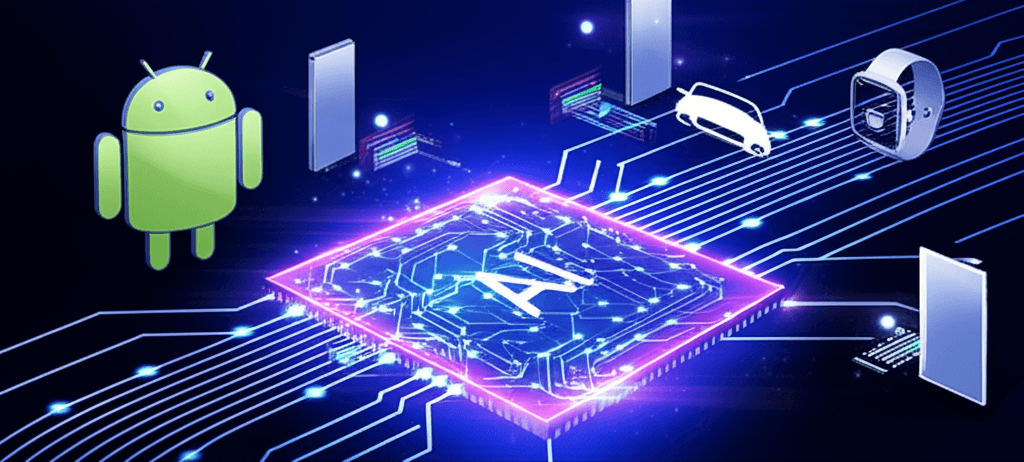Huawei's AI-First HarmonyOS NEXT Challenges Mobile Duopoly
Huawei's HarmonyOS 6 launches as an AI-first, Android-free OS, aiming to redefine user interaction and connected devices.
June 24, 2025

The mobile operating system landscape, long dominated by the duopoly of Google's Android and Apple's iOS, is facing a new challenger architected around artificial intelligence. Huawei's HarmonyOS is entering its next phase, not merely as an alternative, but as a platform fundamentally driven by AI agents and a ground-up, independent ecosystem. The recent beta release of HarmonyOS 6 to developers signals a strategic pivot, moving the battleground from app stores and user interfaces to the core intelligence of the operating system itself. This move represents a significant step in Huawei's quest for technological self-reliance and has the potential to reshape user expectations and developer priorities in the mobile sphere.
At the heart of Huawei's strategy is the complete integration of AI into the operating system's fabric. With HarmonyOS NEXT, the company has shed the last vestiges of Android's AOSP code, creating a truly independent platform built on its own microkernel architecture.[1][2] This foundational independence allows for deep-level optimization and the introduction of system-wide AI features powered by Huawei's own Pangu large language model.[3][4] Unlike competitors where AI often feels like an add-on feature, HarmonyOS 6 is designed so that AI agents are the primary architecture driving user interactions. The goal is to create an operating system that intuitively understands user intent and context, rather than simply responding to direct commands.[5][6] This is manifest in features like the new personal assistant, XiaoYi, which can scan the phone's screen to provide contextual results, similar to Google's Circle to Search.[5][6] Huawei claims this approach leads to a more natural and human-like interaction with the device.[5] The system's intelligence is also designed to be proactive, with the Celia AI assistant understanding user needs to offer recommendations across more than ten different scenarios.[7]
To facilitate this AI-centric vision, Huawei has released the HarmonyOS Agent Framework, a toolkit enabling developers to create their own AI agents without the need to build and train their own foundational models.[8][9] This is a crucial step in building out the HarmonyOS ecosystem, lowering the barrier to entry for developers to create intelligent applications. At its developer conference, Huawei announced that over 50 AI agents from major Chinese platforms like Weibo and Ximalaya would be available at the public launch of HarmonyOS 6.[8][9] These agents can perform tasks on behalf of users, from managing spreadsheets through voice commands with ChatExcel to assisting in the creation of new HarmonyOS apps.[5][6] This framework is powered by the latest iteration of Huawei's AI models, Pangu 5.5, which includes a powerful natural language processing model and a 15 billion parameter computer vision model.[8] The Pangu models are offered in scalable versions, from smaller models for on-device tasks to trillion-parameter versions for complex, cloud-based applications, targeting key industries like finance, manufacturing, and automotive.[10][8]
Huawei's ambition extends beyond just smartphones. The company envisions HarmonyOS as a distributed operating system that provides a seamless, interconnected experience across a wide range of devices, including tablets, wearables, smart home gadgets, and even cars.[3][7] This "One As All, All As One" approach allows devices to share resources and data effortlessly, a feature that distinguishes it from the more mobile-centric designs of Android and iOS.[11] The company claims this architecture leads to significant performance improvements, including a 30% increase in device fluency and a 20% reduction in power consumption.[2][3] Features like Huawei Share 2.0 aim to make cross-device file sharing nearly instantaneous.[3] This full-scenario integration, combined with enhanced security through a self-developed Star Shield architecture, forms the three pillars—intelligence, interconnectivity, and security—that Huawei believes gives HarmonyOS an edge over its rivals.[7][3]
The success of this ambitious project hinges on building a robust application ecosystem, a challenge for any new operating system. Huawei is aggressively courting developers, particularly in its home market of China, where HarmonyOS has already surpassed iOS in market share, capturing 19% of the market compared to Apple's 17% in early 2025.[12][13] Globally, its share remains smaller, hovering around 4-5%.[13][12] Recognizing the importance of a thriving app library, Huawei has focused on porting the top 5,000 most-used apps in China to its native platform, which it says accounts for 99.9% of user time.[8][14] The company has already registered over 8 million developers and boasts more than 30,000 apps and "atomic services" in its ecosystem.[8][15] However, the transition to a completely independent OS means that HarmonyOS NEXT will not be compatible with Android applications, a move that presents both a risk and an opportunity. While some analysts note that many of the initial native apps are demo versions with limited functionality, the company is investing heavily in developer support and tools like DevEco Studio to accelerate the migration.[1][16] The ultimate test for HarmonyOS will be its ability to convince both developers and consumers, first in China and then potentially globally, that its AI-driven, interconnected ecosystem offers a compelling enough alternative to break the long-standing duopoly of Android and iOS.